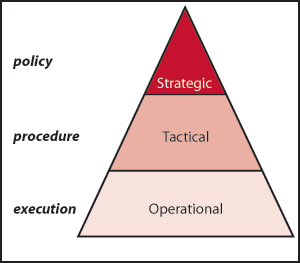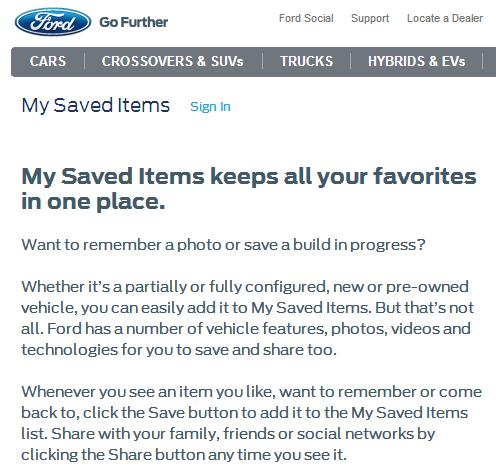 How did you learn to drive traffic to your blog? How about using Twitter as a tool to connect with your customers? What made you decide to set up a Facebook page for your business in the first place?
How did you learn to drive traffic to your blog? How about using Twitter as a tool to connect with your customers? What made you decide to set up a Facebook page for your business in the first place?
If you’re like most people who actively use the Internet as part of their marketing plan, you probably adopted these things, as well as most of your online presence as a tactic after reading an article about it, or seeing another business use that tactic in an effective manner. Someone tells you that you need this, they show you how to implement it, and you have another piece of the online marketing puzzle in place.
Most bloggers and webmasters use an amalgamation of tactics they’ve pulled from several resources to grow their popularity. Sometimes you add a WordPress plugin to increase RSS subscribers because you saw the Whitehouse do it, and sometimes you aim to closely mirror another popular blogger’s Twitter use. A lot of times it works out alright. After all, most businesses have similar underlying goals; show me a business that doesn’t want to attract new customers, keep the ones they have and use satisfied customers as public brand advocates. It may be alright, but when done right digital marketing results can be exceptional.
You May Be Online, but Are You Doing Business?
Even though tactical thinking can produce results, to get optimum results you need to shift from a tactical mindset to a strategic one. When you read an article that encourages you to focus on your purpose, or a cause, conjure up your ideal customer, or to place less emphasis on getting likes and tweets, and instead focus on your bottom line, they’re all trying to help you develop a strategic mindset.
You will definitely need tactics to succeed with any digital marketing plan, but tactical thinking should be reserved for the point that the rubber meets the road. Strategic thinking is what will help your business see extraordinary benefits from a digital marketing campaign, or allow an online entrepreneur to grow a small idea into something profitable and tangible.

If no one is making the strategic decisions for your business, your tactics and operations are ultimately aimless.
Without identifying what you’re trying to achieve, you’ll never be able to choose the right set of tactics and tools for the job. It’s like saying you plan to work on your house. When I show up to help with paint and brushes, it isn’t going to help us much when we find that your bathroom floor is falling in, and your walls are freshly painted. We end up wasting resources and manpower, and you still have the same problems because we lacked a strategy. You’ll end up with the freshest coat of paint in town, so it wasn’t entirely a waste, but a fresh coat of paint isn’t going to be of much benefit after the floor falls through and you suffer a catastrophe.
Back to Basics
Build your strategies out from your core business function. For example, Ford’s primary source of income is derived from selling cars. Marketing is ultimately the means in which they convince customers to not only buy an automobile, but to buy a new automobile, and to buy a Ford. Their customer base is very large, spanning age, race, sex and income.
A small survey of car dealerships estimates that most of their customers buy a car every 7 years. A lot of people by used though, which means that Ford doesn’t necessarily get another sell every time someone buys a Ford from a dealer. When you take the average sales figures, the American auto industry sold 5.7 cars for every 100 people; this implies that the average American accounts for a new car purchase every 17.5 years. It’s a big ticket item, and a new car is the largest purchase many people will make in their lifetime.
Ford would ideally like to maintain a strong relationship with the segment of the population who purchase a new car every 3-5 years. They’re nearly six times more valuable as an average customer, and are likely an easy target for up-sales. They also want to highlight the positive experiences customers have had with their Ford vehicles. Most importantly, they need to perpetually stay top of mind while their customers live their normal life. Digital marketing allows car manufacturers and dealerships an unobtrusive means of maintaining a weak connection, and a way tighten relationships with drivers closer to the point of sale, which is more dependent on a calendar than location in the case of car sales.

Ford has introduced a saved items feature that will allow users to recall a vehicle build or specific item at a later date, as well as share with friends through social media. Having a personalized build tells Ford a little bit about your preferences and allows the marketing that has taken place to be built on closer to your next car purchase.
To succeed with their online marketing strategy, Ford needs their tactics to represent their strategy. Want to show customers the quieter cabins? Make a YouTube video comparing a ride through a loud area with a competitor’s vehicle. Want to target millenials for the release of a new Ford Focus? Create an integrated Facebook campaign with highly targeted Facebook Ads. The things you spend time doing on line can reflect the business goals you’ve identified elsewhere. The best online strategies meet needs that offline strategies have failed at. Here is a YouTube video series Ford produced to showcase upgrades on the 2013 Ford Fusion. This particular video introduces the vehicle’s park assist, a feature not commonly found on American cars.
No professional would ever use a less than strategic approach for any other type of work. We still see a lot of people treating social media like the spaghetti test though; throwing a bunch against the wall just to see what sticks. When you rely on your objectives to form your strategy, you’ll find that you don’t need to be on every network around. You’ll also realize that there are a lot of businesses that have dove in to social media head first in the dark.
Social Media Made Me Do It
Social media has become so popular that in some instances you will need to get on the bandwagon regardless of your strategy. Facebook and Twitter are primary communication channels now that rival e-mail and the telephone in their pervasiveness. Customers now expect to have those channels open to them. These mandatory forays into social media are often dismissive of strategy, and have frequently represented small business’s first experience with digital marketing.
Communication is almost always going to play a large role in the growth of any business. A comprehensive strategy will always address customer communication, so even if creating a Facebook page was a reaction to communication trends it’s still in line with strategic thinking.
Even though your first steps were reactive in nature, you’ll still need to strategize the integration of your Facebook or Twitter campaign with your existing marketing, and you’ll need to identify the goals you want your campaign to address.
Once you know what you want to achieve, I recommend a strategic approach when executing your tactics. Approach it scientifically. There are only a limited number of tactics, but two different people can get wildly different results based on subtle differences. You’ll later be able to improve your results by optimizing what you have done.
- Observe– See what tactics others are using, what users are reacting positively to, and customer feedback. Be receptive to subtle cues that can direct your campaign in a unique way that is ultimately designed by the customers, for the customers, even if they don’t realize it.
- Audit– After collecting data organize and assess your findings. Go out of your specialty to see if those subtle cues or available tactics have been successful in other realms of marketing. Take stock of what you know, what are the unknowns, and what you’ll need more information on.
- Plan– Figure out the specifics of what you’re going to do. How are you going to enter the conversation in a way that is unique, memorable, new, and relatively better than the rest? Consider your strengths and weaknesses and opportunities, do a risk assessment and plan for all possible outcomes (including crisis). Get your resources, schedule and manpower in place.
- Execute– Go for it. Follow your plan as close as possible, adjusting to meet unforeseen demands and opportunities that are a response to your campaign.
- Survey– Measure as many metrics as you possibly can. Use all available tools that are compatible or applicable, and keep statistics manually that cannot be automatically tallied. Takes notes and observe the reactions other businesses, demographics and groups react to your presence. Everything from the time of day to the overall online traffic on a given day can affect your campaign. For metrics that do not have a clear scale like time or impressions to record, I will create an arbitrary point scale from 1-6 to rate magnitude. For example to track the amount of users who are online so I can consider that in a later assessment, I will use data from my website and Alexa to rate the number of people online that day from 1-6. Some days results will be low for everyone online, and if you can account for that you’ll be able to exclude outliers in your next assessment.
- Enhance– Use what you’ve learned to improve your approach. The tactics you’ve settled on are limited, but your results can be improved dramatically in almost every case through optimization when it comes to online marketing.
- Repeat– Do it again, only better.
Have you been spending a lot of time online, but not seeing much in the way of results? Have you been counting insignificant metrics like followers, likes and page views as results, while your bottom line suffers? Do you even know what you’re doing online in the first place? Strategic thinking is a must for social media. Goals, planning and results go hand in hand with success. A lack of business acumen is a prevalent deficiency in social media professionals, and it’s the primary advantage that someone with a business background brings to the table. A more creative type with good relationship skills and a strategic mindset – that’s a force to be reckoned with when it comes to social media professionals.
- The Evolution of Marketing: From Catalogs to Cat Blogs - November 8, 2022
- How to Make a Tweet This Link - February 5, 2022
- Dramatically Improve Marketing Results with Advanced Analytics - September 20, 2021
- The Next Chapter for Social Media Sun - June 4, 2013
- Optimizing Your FAQ to Maximize ROI - December 5, 2012
- Blogging Isn’t a Rocket, It’s More Like a Roller Coaster - November 19, 2012
- Weapons of Influence and Klout’s Role in Marketing - November 17, 2012
- The Biggest Problem With Inbound Marketing Blogs Today - November 16, 2012

Cheers Adam.
QQ: how do you justify the costs?
Yes,it is necessary to use full planned strategy for your business.